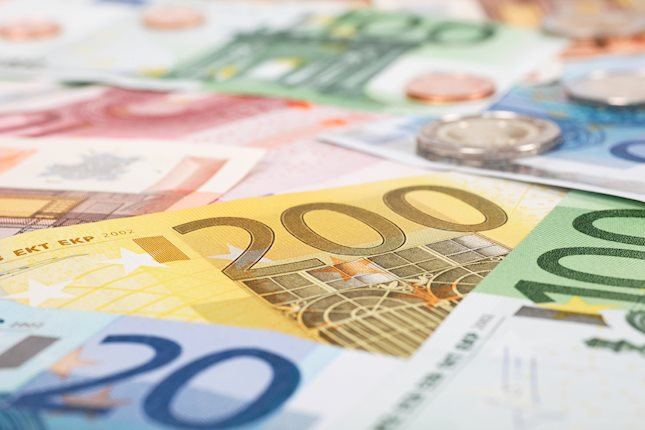- USD/CAD struggles to gain any meaningful traction, though the downside remains limited.
- Rebounding US bond yields help revive USD demand and act as a tailwind for the major.
- Weaker Oil prices undermine the Loonie and also lend support amid Trump’s tariff threats.
The USD/CAD pair remains on the defensive for the second straight day on Thursday, albeit it manages to hold above the 1.4000 psychological mark through the Asian session. Moreover, the fundamental backdrop warrants some caution before positioning for an extension of this week's pullback from the 1.4175-1.4180 region, or the highest level since April 2020.
US President-elect Donald Trump earlier this week pledged to impose big tariffs on all products coming into the US from Mexico and Canada, which would end a regional free trade agreement and trigger trade wars. Furthermore, Crude Oil prices languish near the weekly low amid concerns about slowing fuel demand growth in the US and China – the world's top consumers. This, in turn, is seen undermining the commodity-linked Loonie and acting as a tailwind for the USD/CAD pair amid the emergence of some US Dollar (USD) dip-buying.
Wednesday's US macro data dump pointed to a still resilient US economy and stalling inflation progress, suggesting that the Federal Reserve (Fed) might be cautious on further interest rate cuts. This triggers a fresh leg up in the US Treasury bond yields and assists the USD Index (DXY), which tracks the Greenback against a basket of currencies, in reversing a part of the previous day's slide to a two-week low. Apart from this, geopolitical risks benefit the safe-haven buck and turn out to be another factor lending support to the USD/CAD pair.
Traders, however, seem reluctant to place aggressive bets amid relatively thin trading volumes on the back of the Thanksgiving Day holiday in the US and ahead of the OPEC+ meet on Sunday. Nevertheless, the aforementioned supporting factors suggest that the path of least resistance for the USD/CAD pair is to the upside. Hence, any further corrective decline might still be seen as a buying opportunity and remain limited.
Canadian Dollar FAQs
The key factors driving the Canadian Dollar (CAD) are the level of interest rates set by the Bank of Canada (BoC), the price of Oil, Canada’s largest export, the health of its economy, inflation and the Trade Balance, which is the difference between the value of Canada’s exports versus its imports. Other factors include market sentiment – whether investors are taking on more risky assets (risk-on) or seeking safe-havens (risk-off) – with risk-on being CAD-positive. As its largest trading partner, the health of the US economy is also a key factor influencing the Canadian Dollar.
The Bank of Canada (BoC) has a significant influence on the Canadian Dollar by setting the level of interest rates that banks can lend to one another. This influences the level of interest rates for everyone. The main goal of the BoC is to maintain inflation at 1-3% by adjusting interest rates up or down. Relatively higher interest rates tend to be positive for the CAD. The Bank of Canada can also use quantitative easing and tightening to influence credit conditions, with the former CAD-negative and the latter CAD-positive.
The price of Oil is a key factor impacting the value of the Canadian Dollar. Petroleum is Canada’s biggest export, so Oil price tends to have an immediate impact on the CAD value. Generally, if Oil price rises CAD also goes up, as aggregate demand for the currency increases. The opposite is the case if the price of Oil falls. Higher Oil prices also tend to result in a greater likelihood of a positive Trade Balance, which is also supportive of the CAD.
While inflation had always traditionally been thought of as a negative factor for a currency since it lowers the value of money, the opposite has actually been the case in modern times with the relaxation of cross-border capital controls. Higher inflation tends to lead central banks to put up interest rates which attracts more capital inflows from global investors seeking a lucrative place to keep their money. This increases demand for the local currency, which in Canada’s case is the Canadian Dollar.
Macroeconomic data releases gauge the health of the economy and can have an impact on the Canadian Dollar. Indicators such as GDP, Manufacturing and Services PMIs, employment, and consumer sentiment surveys can all influence the direction of the CAD. A strong economy is good for the Canadian Dollar. Not only does it attract more foreign investment but it may encourage the Bank of Canada to put up interest rates, leading to a stronger currency. If economic data is weak, however, the CAD is likely to fall.
Information on these pages contains forward-looking statements that involve risks and uncertainties. Markets and instruments profiled on this page are for informational purposes only and should not in any way come across as a recommendation to buy or sell in these assets. You should do your own thorough research before making any investment decisions. FXStreet does not in any way guarantee that this information is free from mistakes, errors, or material misstatements. It also does not guarantee that this information is of a timely nature. Investing in Open Markets involves a great deal of risk, including the loss of all or a portion of your investment, as well as emotional distress. All risks, losses and costs associated with investing, including total loss of principal, are your responsibility. The views and opinions expressed in this article are those of the authors and do not necessarily reflect the official policy or position of FXStreet nor its advertisers. The author will not be held responsible for information that is found at the end of links posted on this page.
If not otherwise explicitly mentioned in the body of the article, at the time of writing, the author has no position in any stock mentioned in this article and no business relationship with any company mentioned. The author has not received compensation for writing this article, other than from FXStreet.
FXStreet and the author do not provide personalized recommendations. The author makes no representations as to the accuracy, completeness, or suitability of this information. FXStreet and the author will not be liable for any errors, omissions or any losses, injuries or damages arising from this information and its display or use. Errors and omissions excepted.
The author and FXStreet are not registered investment advisors and nothing in this article is intended to be investment advice.
Recommended content
Editors’ Picks

EUR/USD drops below 1.0550 ahead of German inflation data
EUR/USD extends losses below 1.0550 in the European session on Thursday. The pair's downside could be attributed to French political worries and a broad US Dollar rebound amid the cautious mood. Traders remain wary due to mounting trade war risks. Germany's inflation data is in focus.

GBP/USD holds lower ground near 1.2650
GBP/USD remains pressured near 1.2600 in European trading on Thursday as the US Dollar picks up haven dmeand on deteriorating risk sentiment. A sense of cautiom prevails amid Trump's tariff plans even though liquidity remains thin on Thanksgiving Day.

Gold price bulls remain on the sidelines on stronger USD, positive risk tone
Gold price (XAU/USD) reverses an intraday dip to the $2,620 area and trades near the daily high during the first half of the European session on Thursday, albeit it lacks bullish conviction. Investors remain concerned that US President-elect Donald Trump's tariff plans will impact the global economic outlook.

Fantom bulls eye yearly high as BTC rebounds
Fantom (FTM) continued its rally and rallied 8% until Thursday, trading above $1.09 after 43% gains in the previous week. Like FTM, most altcoins have continued the rally as Bitcoin (BTC) recovers from its recent pullback this week.

Eurozone PMI sounds the alarm about growth once more
The composite PMI dropped from 50 to 48.1, once more stressing growth concerns for the eurozone. Hard data has actually come in better than expected recently – so ahead of the December meeting, the ECB has to figure out whether this is the PMI crying wolf or whether it should take this signal seriously. We think it’s the latter.

Best Forex Brokers with Low Spreads
VERIFIED Low spreads are crucial for reducing trading costs. Explore top Forex brokers offering competitive spreads and high leverage. Compare options for EUR/USD, GBP/USD, USD/JPY, and Gold.